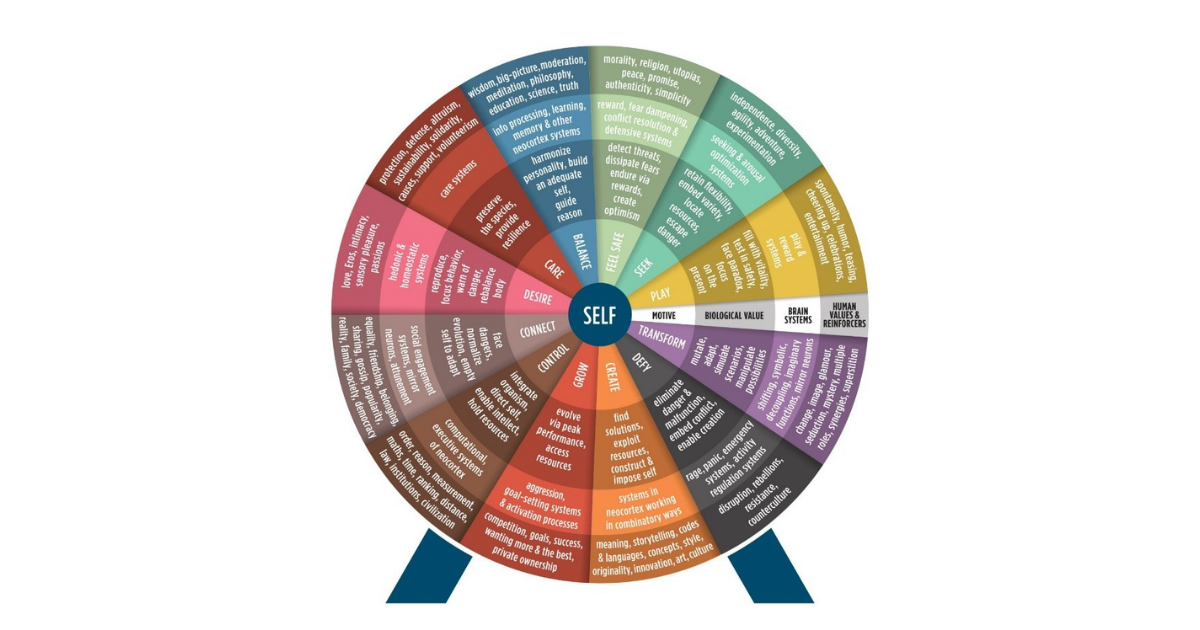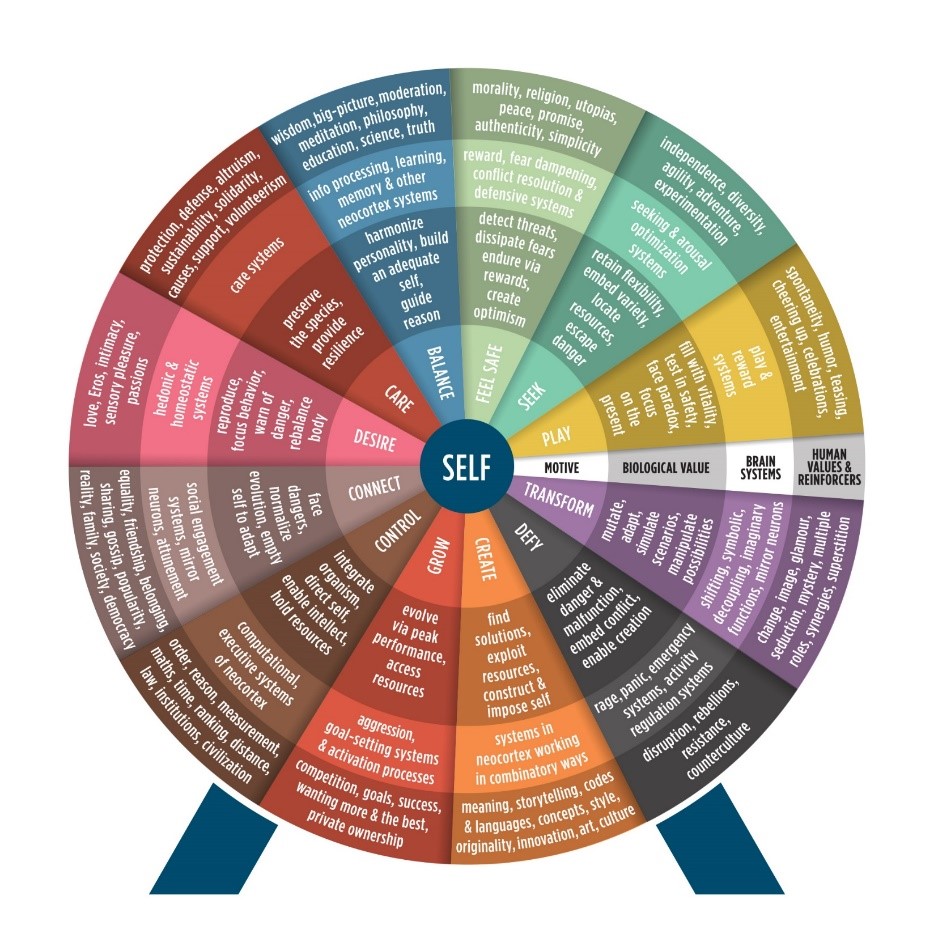
From craft beer to coffee: a strategy developed on brand essence to generate a natural alignment to human needs.
How can a company differentiate itself in the eyes of consumers? To define what a brand stands for and to be consistent with its brand purpose, THE WHEEL OF MOTIVES ™ was developed, an innovative method that identified 12 Fundamental Human Motives, through a meta-analysis on different scientific disciplines studying human behaviour.
Among the several effects of the Pandemics on the relationship between companies and consumers, we notice a growing attention to sustainability that has become broader than environment, including many aspects such as ethical behaviour and support to local economy and communities. Consequently, there is a lot of discussion around brand purpose that is considered a must and gains relevance with consumers. More people ask companies and brands to have an active role to sustain them in challenging time or in their everyday life, to act with integrity and to take a stand on socially topical subjects. In fact, some studies observe a growth over time for strong purposeful brands up to 75% higher than average growth.
However, for the brand to be effective, the purpose should be strongly connected with the brand essence and should stay consistent over time. Multiple messages can dilute or confuse the brand essence and personality. Differentiation on the purpose level is hard to achieve as companies are following similar approaches in their insights & marketing plans and they are tapping into the same trends, in a way not always adherent with the brand DNA, affecting its authenticity, uniqueness and credibility.
The Pandemics has made the shopping process in store even faster, with the need from brand to be able to stand out and immediately connect with consumers. The indisputable rise of online sales makes the shopping experience very convenient but often not engaging. Consequently, the brands are the hero when they reach home.
Biology tells us that nature has established an array of systems in our brain and body and made their satisfaction intrinsically gratifying. Knowing how the brain and the body work and applying this knowledge to how we build and communicate our brands, generates living brands that aligns to human needs and motives.
Successful brands own primary universal territories in consumer’s mind. These might have been originally instigated by the character of their creator, their historic DNA and its evolution, their products, ending up permeating their communication and being reinforced in turn by the consumer. The purpose too should be coherent and rooted in the brand DNA in order to be effective.
The brand strategy agency Brand Aviators has identified 12 Fundamental Human Motives, organized in their proprietary tool THE WHEEL OF MOTIVES™. The motives are triggered by equivalent systems and operations in our brain, that can be identified for each category and brand.
The higher the clarity and coherence of strategy and execution with the core motives, the higher will be the market share in the category. The brand is also able to become bigger than the category.

Craft beer: how the motives transformed the strategy of the analysed brand
The category
The three predominant motives driving consumption are the motive to Create, the motive to Seek and the motive to Defy, each weight being quantified.
The brand
Among these drivers, the dominant motive for the analysed brand came out to be the motive to “Create”. The brand is a “creator”, its essence is self-expression, its personality is imaginative, carrying values of originality and customization.
The brand sells creativity, expression, inspiration. People drink this beer to make a statement about themselves, their sophistication and character. Driven by biological urges, humans need to satisfy these deep motives and emotions much more than the need for a beer, enlarging the potential beyond consumption occasions.
An overall new strategy has been developed to sell not just beer but creativity through beer. Creativity is the theme for ATL and BTL campaign, sponsorship, loyalty programs.
The logo, the visual, the words, the font, the colours, the messages, all need to substantiate the motives, in a unique way. The brand creator plays an essential role.
The blockchain will change the go to market strategy, give more direct communication to the end consumer. Bottle labels and caps will be painted by artists.
A new branded place will open, called the Craft Workshop, to live and experience the brand and to host artistic events.
The marketing knowledge of the company became much more sophisticated, learning how to express creativity.
Another example of a manifestation of the motive to “Create” is the communication developed for Coffeeway in Greece. Coffeeway is about a creative brand of coffee that helps people to unleash creativity, instead of just selling coffee.
Other categories and brands will have different motives and drivers of choice.
When strategy, plans and execution are aligned to the core motive of the brand, it generates alignment with human needs.
The brands tapping into one of the category core motives immediately activate automatic choice, align to the relevant brain motive and create clarity and fluency, expressing its motive and DNA across all touchpoints and tapping into human values that are coherent and reinforce the motive.
Barbara Pederzolli is a Consultant in Market research, Strategy & Insights for FMCG companies, strategic consultancy firms and Marketing research agencies.
She is recognized for a deep 360-degree expertise on Market research, Consumer/ Shopper/ Customer Insights, Data & Analytics, Innovation, Marketing & Commercial performance & strategy.
Former Insights Director @ Coca-Cola, since 2012 she has held roles of increasing responsibilities on 25 European countries, fostering an insights-centric culture, and has pioneered the use of innovative solutions for the business in the field of Neuroscience and Behavioural Sciences.
Her experience is completed by a variety of local and international roles in Marketing research, Insights, Modelling & Analytics, in Market research agencies and FMCG leading companies, such as Nielsen, Kraft/ Mondelez, Gillette/ P&G, Coca-Cola HBC.
—
Per leggere la versione in italiano, CLICCA QUI!